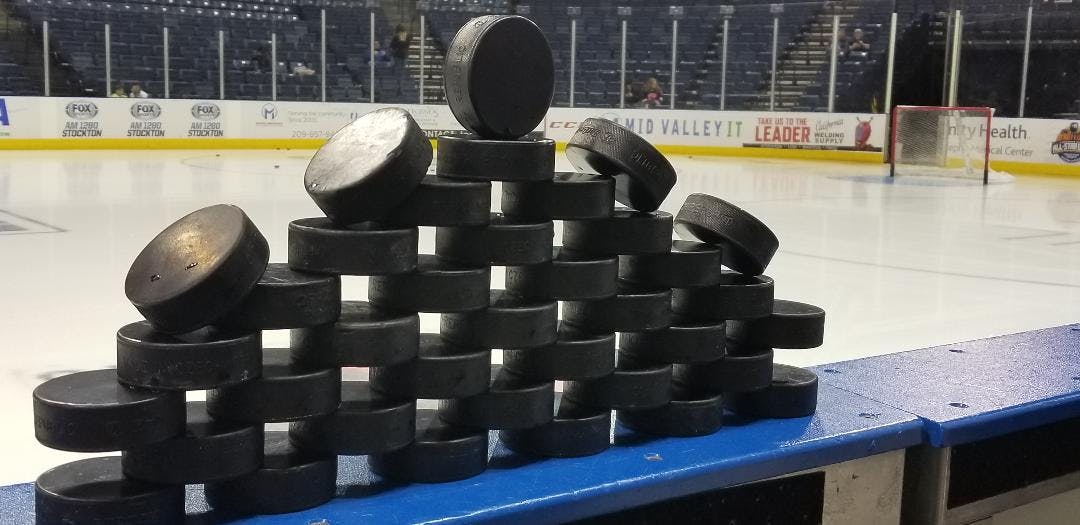Some things to know about the new CBA

By Ryan Pike
3 years agoIt’s a big week for the National Hockey League, as they’ve agreed to (and ratified) a new collective bargaining agreement with their players association. We’ll have labour peace through at least 2025-26, and potentially through 2026-27 depending on league revenue growth and escrow debts to the league.
So what’s in this damn thing? Let’s crack it open!
Generally-speaking, it’s pretty much what we were led to expect by our insider friends.
The salary cap
The cap will remain at $81.5 million, as it was in 2019-20, until Hockey-Related Revenues from the prior season surpass $3.3 billion – for reference, HRR for 2019-20 was expected to be $4.8 billion before everything went sideways. Generally-speaking, it seems like the cap probably won’t move until 2022-23.
If revenues are between $3.3 billion and $4.8 billion, the cap will go up by up to another million (e.g., to a maximum of $82.5 million). Once revenues have recovered fully and have returned to $4.8 billion, they’re moving to a “lag formula” where the cap is based off what revenues were two seasons ago.
The NHLPA’s famed five percent escalator is gone – before, they could just inject new money into the system regardless of league revenue growth. The new formula is expected to be both (a) tied to actual revenues and (b) provide a cap number to NHL clubs far earlier in the season than under the current formula. Remember how suddenly the cap didn’t go up a ton after 2018-19 and teams had to scramble? Nobody liked that.
Contract limits
There have been adjustments to the maximum salary on entry-level contracts, both in the NHL and minor leagues, based upon the year a player was drafted. (The signing bonus levels are unchanged; it’s capped at 10% for entry level deals and no cap for other deals.)
League minimum salary is also being adjusted from the present level of $700,000. They’ll go to $750,000 in 2021-22 and $775,000 in 2023-24. Neither will have a huge cap impact for teams.
League trophies that weren’t specifically mentioned in the listing of league-paid (Category B) bonuses have been added: the Art Ross (bonuses paid for finishing 1st to 5th), Bill Masterton, Mark Messier and King Clancy (bonuses only paid for winning) trophies have been added. Starting with 2022-23, bonus amounts paid by the league will go up by 50%.
The Art Ross has been added to listing of club-paid bonuses (for finishing 1st to 5th), as well. Starting with ELCs signed with 2022 draftees, Category A bonus limits are being increased to $1 million (and limits on any single category to $250,000) and Category B bonus limits are being increased to $2.5 million. (Category A bonuses are more team-based, like being one of the club’s ice time or statistical leaders, while Category B bonuses are for being a league leader.)
There’s a lot changing for ELC compensation limits, so here’s a quick rundown.
Maximum Entry Level Compensation During CBA
| Draft Year | Salary | Perf. Bonuses | Total |
| 2019 | $925,000 | $2,850,000 | $3,775,000 |
| 2020 | $925,000 | $2,850,000 | $3,775,000 |
| 2021 | $925,000 | $2,850,000 | $3,775,000 |
| 2022 | $950,000 | $3,500,000 | $4,450,000 |
| 2023 | $950,000 | $3,500,000 | $4,450,000 |
| 2024 | $975,000 | $3,500,000 | $4,475,000 |
| 2025 | $975,000 | $3,500,000 | $4,475,000 |
| 2026 | $1,000,000 | $3,500,000 | $4,500,000 |
Only the top draftees get maximum bonuses included in their deals to begin with, but the lag in the bonuses increasing gives an idea as to how the NHL estimates their revenues recovering.
Other stuff
The Ryan O’Reilly Rule lives: Waivers on players who played in Europe after the beginning of the season (Section 13.23 of the CBA) are frustrating. They’ve been altered. Now, if a team signs an unrestricted free agent from Europe mid-season or one of their own RFAs mid-season, they won’t be subject to waivers. But signing another team’s RFA – such as an O’Reilly – would still be subject to waivers.
The UFA Courting Period is gone: Be prepared for news to be more spread out on free agency day.
Contracts stay intact when they move: Before, teams could get rid of no-trade and no-move clauses if they acquired a player before they came into effect. Now? Contracts are contracts, and they travel with a player intact and do not change.
Recent articles from Ryan Pike





